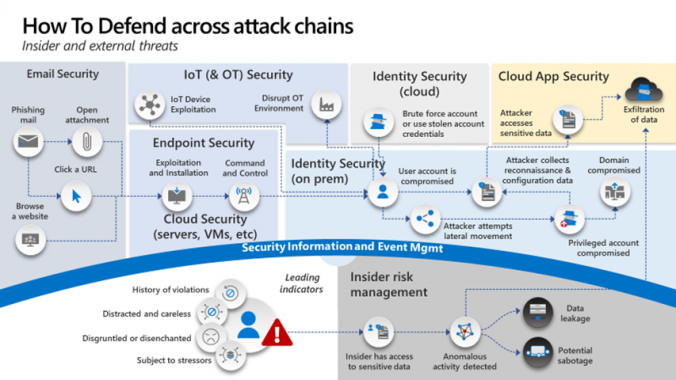I’ve been in this industry for more than a few decades and many times have come across cyber professionals and organizations who do not have a clear answer to this basic question: Why do we approach security the way we do? People have varying answers from “it’s my passion”, “bad guys are bad”, “the money”, “I love technology”, and many more. Rarely do I get the answer of “Because protecting our “fill in the blank” is the right thing to do.”
Many professionals I work with are in this because they see bad actors for what they truly are. Bad, not good, very low down, and sometimes outright evil actors. The adversary wants to own you, manipulate you, control you, or in the case of many nation states eventually break you. The terms of “Due Care” and “Due Diligence” are legal terms every cyber security professional should know on day one. These terms are drivers for everything we do. If we know we have an issue, then it’s important to protect and do something about it.
Most cyber security professionals do not have a legal background so it is a good idea to brush up on these key terms so one can navigate the profession a little bit easier. These are as critical to me as confidentiality, availability, integrity, and non-repudiation. Topics I will discuss in a future blog because people need to be reminded from time to time.
Cybersecurity is a critical concern for organizations across all industries, with data breaches and cyber-attacks becoming increasingly common. Let’s face facts; the bad actors are bad, and they want to take companies down for reasons ranging from fame, they are mean, or worst case they represent a nation state who is in a digital war with the other country. In this context, due care and due diligence are two concepts often discussed in relation to cybersecurity. While both are important, they are distinct and serve different purposes.
Due care refers to the level of care that a reasonable person would take to protect their own personal information and that of others. It is a legal concept that obligates organizations to take reasonable steps to protect the personal information of their customers and employees from unauthorized access, use, and disclosure. Due care involves establishing and implementing reasonable security measures to protect data, such as using firewalls, encryption, and access controls. Due care is a proactive approach that emphasizes the prevention of security breaches and data loss.
Due diligence, on the other hand, is a process of conducting a thorough investigation into a company’s security practices and assessing the risks associated with a particular transaction or activity. Due diligence involves evaluating the security posture of a company and identifying any vulnerabilities or gaps that may exist in its security infrastructure. Due diligence is often conducted before entering a business relationship with another organization or acquiring a new company.
In the context of cybersecurity, due diligence involves reviewing the security policies and procedures of a company, as well as conducting vulnerability assessments and penetration testing to identify any weaknesses in the security infrastructure. Due diligence also involves reviewing the security training and awareness programs in place for employees and evaluating the incident response and disaster recovery plans of the organization.
While due care and due diligence are distinct concepts, they are both important for maintaining effective cybersecurity practices. Due care is essential for establishing a baseline level of security and implementing best practices to prevent security breaches. Due diligence, on the other hand, is critical for identifying potential risks and vulnerabilities and developing strategies to address them. Together, these two concepts help organizations to maintain a strong security posture and minimize the risk of cyber-attacks and data breaches.
In conclusion, due care and due diligence are two critical concepts in cybersecurity that serve different purposes. Due care is a proactive approach that emphasizes the prevention of security breaches and data loss, while due diligence involves conducting a thorough investigation into a company’s security practices and assessing the risks associated with a particular transaction or activity.
Both concepts are important for maintaining effective cybersecurity practices and minimizing the risk of cyber-attacks and data breaches. Down the road I will address how these two very critical terms and corresponding activities can help leaders build out their risk posture and program.
About the author
Shawn Anderson has an extensive background in cybersecurity, beginning his career while serving in the US Marine Corps. He played a significant role as one of the original agents in the cybercrime unit of the Naval Criminal Investigative Service.
Throughout his career, Anderson has held various positions, including Security Analyst, Systems Engineer, Director of Security, Security Advisor, and twice as a Chief Information Security Officer (CISO). His CISO roles involved leading security initiatives for a large defense contractor’s intelligence business and an energy company specializing in transporting environmentally friendly materials.
Beyond his professional achievements, Anderson is recognized for his expertise in the field of cybersecurity. He is a sought-after speaker, writer, and industry expert, providing valuable insights to both C-Suite executives and boards of directors.
Currently, Anderson serves as the Chief Technology Officer (CTO) for Boston Meridian Partners. In this role, he evaluates emerging technologies, collaborates with major security providers to devise cybersecurity strategies, and delivers technology insights to the private equity and venture capital community.
Overall, Shawn Anderson’s career journey showcases a wealth of experience in cybersecurity and leadership roles, making him a respected and influential figure in the industry.


